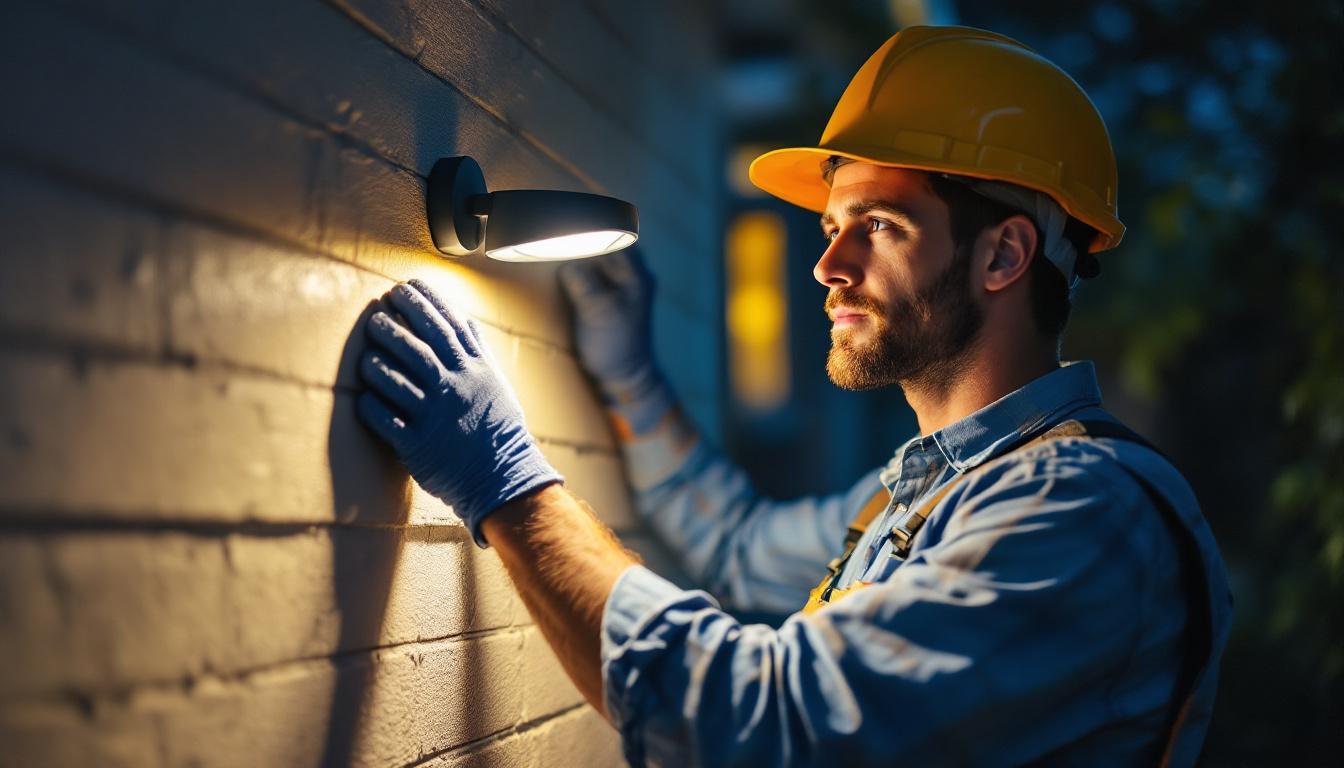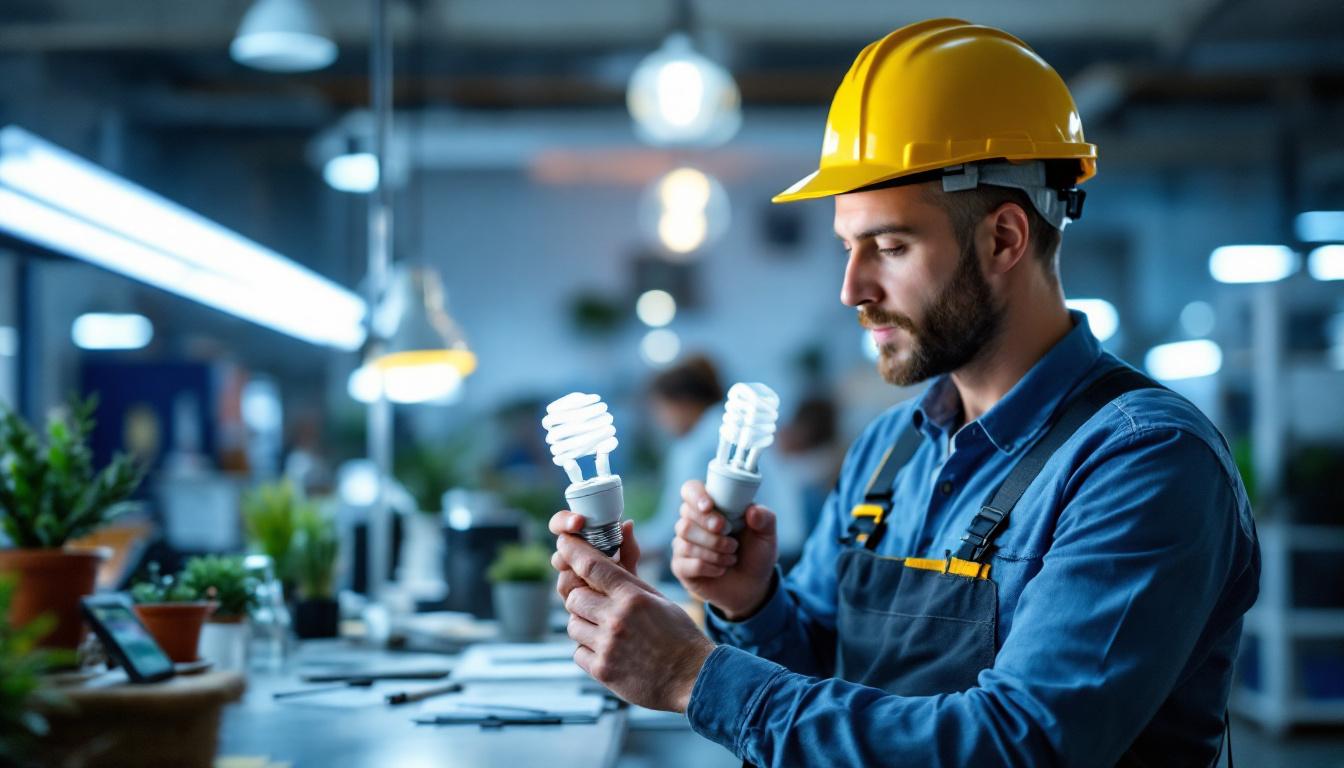
Lighting contractors play a crucial role in creating efficient and effective lighting solutions for various settings. In recent years, the demand for smart lighting technology has surged, leading to a greater focus on motion sensors. These devices not only enhance the functionality of lighting systems but also contribute to energy savings and improved safety. Below are five compelling reasons why lighting contractors should prioritize the use of motion sensors in their projects.
One of the most significant advantages of motion sensors is their ability to enhance energy efficiency. By automatically turning lights on and off based on occupancy, these sensors help reduce unnecessary energy consumption. This is particularly beneficial in commercial settings, where lights can often be left on in unoccupied areas. In residential spaces, motion sensors can also be used in hallways, bathrooms, and outdoor areas, ensuring that lights are only active when needed, thus promoting a more sustainable lifestyle.
Implementing motion sensors can lead to substantial cost savings for clients, as energy bills decrease significantly. This not only appeals to environmentally conscious customers but also aligns with the growing trend of sustainability in the construction and renovation industry. Additionally, the integration of smart technology with motion sensors allows for remote monitoring and control, enabling users to manage their energy use more effectively through smartphone apps or home automation systems.
Incorporating motion sensors into lighting designs contributes to a reduced carbon footprint. By minimizing energy wastage, these devices support efforts to combat climate change. Lighting contractors can position themselves as leaders in sustainability by promoting energy-efficient solutions that resonate with clients’ values. Furthermore, as businesses and homeowners become increasingly aware of their environmental impact, the demand for energy-efficient technologies like motion sensors is expected to rise, creating new opportunities for contractors to expand their service offerings.
While the initial investment in motion sensor technology may be higher than traditional lighting options, the long-term savings on energy costs can be substantial. Clients will appreciate the return on investment, making it easier for contractors to justify the upfront costs. This financial incentive can be a powerful selling point when discussing project options with potential clients. Moreover, many municipalities offer rebates and incentives for energy-efficient upgrades, further enhancing the financial appeal of motion sensor installations. By highlighting these potential savings and incentives, contractors can effectively communicate the value of investing in modern lighting solutions.
In addition to energy savings, motion sensors can also extend the lifespan of lighting fixtures. By reducing the number of hours that lights are in use, the wear and tear on bulbs is minimized, leading to fewer replacements and less waste. This not only contributes to cost savings for clients but also aligns with a broader commitment to reducing environmental impact. As the conversation around energy efficiency continues to evolve, motion sensors stand out as a smart, forward-thinking choice for both new constructions and renovations.
Motion sensors play a vital role in enhancing safety and security in both residential and commercial environments. By automatically illuminating areas when movement is detected, these devices can deter criminal activity and provide a sense of security for occupants. The integration of motion sensors into security systems not only serves as a proactive measure against potential threats but also allows for real-time monitoring, which can be crucial in emergency situations.
In outdoor settings, such as parking lots or pathways, motion sensors ensure that lighting is activated when someone approaches, reducing the risk of accidents and injuries. For lighting contractors, this feature can be a key selling point, especially for clients concerned about safety in their properties. Additionally, the ability to adjust the sensitivity and duration of the light activation can further enhance the functionality of these systems, allowing for tailored solutions that meet specific client needs.
Well-lit areas are less attractive to potential intruders. By installing motion sensors that activate lights in response to movement, contractors can help create a safer environment for their clients. This feature not only enhances the security of properties but also provides peace of mind for homeowners and business owners alike. Furthermore, the presence of motion-activated lights can serve as a visual deterrent, signaling to would-be intruders that the area is monitored and cared for, thereby reducing the likelihood of criminal activity.
Motion sensors can also improve accessibility for individuals with disabilities or those who may have difficulty navigating dark spaces. By ensuring that lights turn on automatically in response to movement, contractors can create more inclusive environments that cater to a wider range of needs. This technology can be particularly beneficial in public spaces such as parks, shopping centers, and transit stations, where ensuring safety and accessibility is paramount. Additionally, the integration of motion sensors with smart home technology can further enhance user experience, allowing individuals to customize their lighting preferences and control them remotely, thus promoting independence and ease of use.
Motion sensors are incredibly versatile and can be integrated into a wide variety of lighting applications. From residential homes to large commercial buildings, these devices can be tailored to meet specific needs and preferences. This adaptability makes them an essential tool for lighting contractors.
Whether it’s for indoor or outdoor use, motion sensors can enhance the functionality of lighting systems in various settings. For instance, they can be used in hallways, staircases, parking lots, and even in gardens, providing illumination only when needed.
Many modern motion sensors come with customizable settings, allowing contractors to adjust sensitivity, duration, and even the level of ambient light required to activate the sensor. This level of customization enables contractors to design lighting solutions that are perfectly suited to their clients’ unique requirements.
As smart home technology continues to evolve, the integration of motion sensors with smart lighting systems has become increasingly popular. Lighting contractors can offer clients the ability to control their lighting remotely, set schedules, and receive alerts, all while benefiting from the energy-saving features of motion sensors.
Convenience is a significant factor for many clients when selecting lighting solutions. Motion sensors provide an effortless way to manage lighting, eliminating the need for manual switches or timers. This convenience can enhance the overall user experience and satisfaction with the lighting system.
For busy homeowners and employees in commercial settings, the ability to have lights automatically turn on and off based on movement can streamline daily routines. Lighting contractors can highlight this convenience when discussing options with potential clients, making a compelling case for the inclusion of motion sensors in their projects.
In environments where hands-free operation is essential—such as kitchens, bathrooms, or commercial spaces—motion sensors provide a practical solution. Clients can move about freely without worrying about turning lights on or off, making these sensors an attractive option for various applications.
Many modern motion sensors come equipped with smart features that allow for enhanced control over lighting systems. These features may include mobile app integration, voice control, and programmable settings, providing clients with a level of convenience that traditional lighting solutions simply cannot match.
As the lighting industry continues to evolve, staying ahead of the competition is essential for contractors. By prioritizing motion sensors in their offerings, lighting contractors can differentiate themselves in a crowded market. Clients are increasingly seeking innovative solutions that enhance energy efficiency, safety, and convenience, making motion sensors a valuable addition to any contractor’s portfolio.
Moreover, as the demand for smart home technology grows, contractors who are knowledgeable about motion sensors and their benefits will be better positioned to attract and retain clients. This expertise can lead to increased referrals and repeat business, ultimately contributing to the long-term success of a lighting contracting business.
By recommending motion sensors as part of their lighting solutions, contractors can build trust with clients. Demonstrating a commitment to energy efficiency, safety, and convenience shows that contractors are not only focused on making a sale but are also invested in the well-being of their clients. This trust can lead to stronger relationships and a more loyal customer base.
Prioritizing motion sensors allows contractors to stay updated with the latest industry trends and technologies. By continuously educating themselves about advancements in motion sensor technology, contractors can provide clients with cutting-edge solutions that meet their evolving needs. This proactive approach can set contractors apart from competitors who may not be as informed about emerging technologies.
Incorporating motion sensors into lighting projects offers numerous benefits that lighting contractors should not overlook. From enhanced energy efficiency and improved safety to increased convenience and a competitive edge, the advantages are clear. By prioritizing motion sensors, contractors can provide clients with innovative solutions that meet their needs while also positioning themselves as leaders in the industry.
As the demand for smart lighting solutions continues to grow, lighting contractors who embrace motion sensor technology will be better equipped to succeed in a rapidly changing market. By understanding and promoting the benefits of motion sensors, contractors can enhance their offerings, build trust with clients, and ultimately drive their business forward.
Ready to elevate your lighting projects with the best motion sensors on the market? At LumenWholesale, we provide lighting contractors like you with spec-grade lighting products that combine quality and affordability. Say goodbye to inflated markups and hello to our extensive selection of reliable, high-performance lighting solutions. With free shipping on bulk orders, you can stock up on the industry’s top motion sensors and more, ensuring your projects shine with efficiency and innovation. Don’t miss out on the value that only LumenWholesale can offer. Wholesale Lighting at the Best Value is just a click away. Enhance your service offerings and delight your clients today!

Discover the essential guide for lighting contractors on whether T8 and T12 bulbs are interchangeable.

Discover the transformative power of 2 LED strip lights in modern lighting installations.

Discover the ultimate guide for lighting contractors on where to buy ceiling fans, featuring top suppliers, essential purchasing tips, and insights into the latest trends to enhance your projects..

Discover how embracing the innovative Hung Angles technique can revolutionize your lighting projects by saving time and reducing costs.